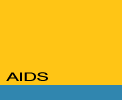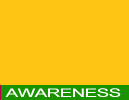| Youth, Sex and Religion - A Summary | Stigma and Discrimination | Transmission, Prevention & ABC | The Conference Gallery |
:: THE DOCUMENTATION
Chapter 2
Youth, Sex and Religion - A Summary
Although the topics of adolescence, sexuality, leadership, psychology and religion were put separately on the conference schedule and addressed in different presentations, demonstrations and group discussions, they were regarded as interrelated and interdependent themes rather than isolated atoms.
Seen as a whole, the different sessions reflected the contemporary discourse on sex and religion with its well-known complexity and controversy in many cultures and societies.
The Conference Map
was applied from time to time as a point of reference to reflect the origin of clashes or gaps between traditional and modern, Western and African thought, norms and values, church and governmental messages, myth and reality, religious and scientific truths..
In one session, the condom, especially the female condom, demonstrated by both youth leaders and a religious representative, gave rise to long and lively discussions regarding its proper use and usefulness, its pros and cons, - and good laughter!

|

|
Touching the religious dimension frequently in sessions, some of the attendees stressed the need of teaching young people abstinence and faithfulness, "the truth about sex and its disasters" and "the sins", while others emphasized the importance of "talking about sex" and "knowing and using the condom" for a normal and healthy sex life.
During lectures and group discussions, many participants heard about the deep impact of culture, society, psychology and religion on HIV/AIDS awareness, in individuals and communities, for the first time, and how these dimensions influence and shape prevention work and, finally, determine its effectiveness.
As one participant put it: "The role of the church and the culture we live in has to be considered, reflected on and understood if we ever want to reach and teach people to stop this disease."
Participant and lecturer Brother Samuel from Tanzania advocated the use of condoms and encouraged the conference to listen to the voice of one´s inner conscience rather than to follow blindly authoritarian lines.
Many participants agreed to the complementary approach in prevention work where A, B and C are all necessary parts of the "cup of awareness" (see above) to be taught in an adequate, correct and complete way, in order to enable true choices, but, also, to be culture-sensitive and culture-specific, which poses a great challenge to the knowledge, teaching ability, communication skills and creativity of youth leaders, counsellors, artists and others working in the field of prevention.
Peer education, the potential of youth being able to communicate the important message to other youth, was perceived as the biggest chance to stop AIDS: " `cause they are open!" Experiences and examples were exchanged.
Since sexual activities in children can already start at an age of 6 -7, the appeal for early sexual education - first at home in the family, and later in schools - during one session, was the starting point for deep discussions and, for instance, the following scenario imagined by one participant:
"The mother teaches her children about sex and prevention, but the children laugh at her and do not take it serious....before going to work the mother leaves condoms openly in the flat and on returning home - the condoms are gone."
A concerned voice warned: "Do not use our children and youth as sex objects"
Yet another voice claimed:" We have to become conscious that we have a penis or a vagina."
Despite a lot of controversies, all participants agreed that the responsibility of youth leaders and adults and the way in which they act as role models in families, groups and societies, was of paramount importance.
What do we want our children to learn and how do we behave ourselves, for instance, when it comes to the practice of abstinence? Of faithfulness? Of condom use?
Stephan Kasoma from STRAIGHT TALK UGANDA illustrated this point with a formidable example showing the conference two plastic water bottles:
Imagine you as parent show your child two externally identical bottles full of water - one is unpoisoned and the other poisoned - what you do not tell the child - and without any further explanations you drink from the bottle with unpoisoned water in front of the child, while at the same time you forbid her/him to drink from the other bottle...!
Most of the sessions were video-taped for a more comprehensive documentation in the future.
Back to the top

home | the
vision | about us | contact
| disclaimers







![]()